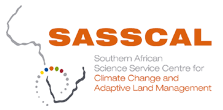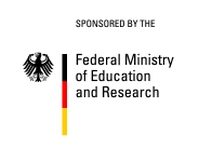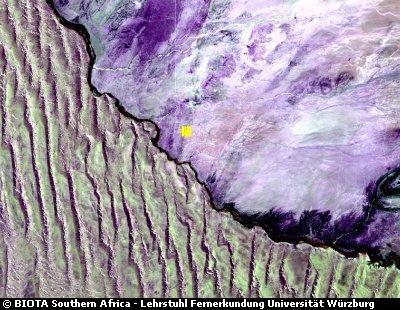 |
|
Data availibilty
Gobabeb
The list below shows which other data is available for this observatory.
Other observatories
The list below shows for which other observatories the following datatype is available:
Remote Sensing
(List in North-South Direction)
North-South Direction
 |
 Gobabeb (S35) - Remote Sensing Gobabeb (S35) - Remote Sensing
Explanations for ETM-subsetsThis image is a subset of a Landsat 7 ETM+ image, covering a size of about 30 km by 25 km, which was acquired during the rainy season. It is visualized as a so-called false colour composite. On the Red, Green and Blue channels the spectral bands 4: NIR (near Infrared), 5: MIR1 (Mid Infrared 1) and 3: visible red of the Landsat ETM+ sensor are displayed (RGB: 4-5-3).This band combination suits best for a detailed visualization of different land cover properties. Due to that, the displayed colours are not natural.
In general, the colours refer to the following land cover types:
|
|||||||||||||



 Angola
Angola Bicuar National Park
Bicuar National Park Namibia
Namibia Aussinanis
Aussinanis South Africa
South Africa Alpha
Alpha Zambia
Zambia Dongwe
Dongwe

 Ogongo
Ogongo Alpha
Alpha





